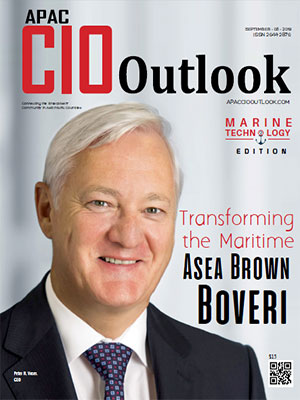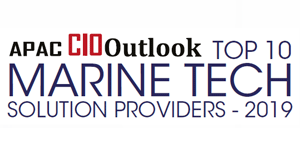It is not just the land and air, but now the ocean too demands technological enhancements, as marine activities aggravate with time. Today, developments in artificial intelligence (AI), Internet of Things (IoT), big data, robotics, and digital currencies owe to streamline the marine operations much faster while inducing optimism in the shipping businesses. Alongside, to allay the concerns over both manufacturing and administrative levels, the maritime industry is taking advantage of the latest technologies, ensuring the lowest contribution to global pollution. Nevertheless, the marine industry is scanning the horizon in constant pursuit of cost-effective technologies and business solutions to future-proof its fleets and assets.
The ever-changing panorama of trade fragmentations and geographical configuration has prompted a rapid competition among maritime solution providers. Meanwhile, the incessant development of robotics has given rise to deep trekker remotely operated vehicles (ROVs), which are widely adopted for underwater inspection and maintenance in the area that is unsafe for humans. Robotics can be harnessed to make shipping faster, safer, and efficient. With recent advancements in robotics operations such as hull cleaning, hull survey and inspections can be done with the help of robots instead of doing processes manually. By integrating AI within the shipping logistics and communication technology, the shipping industry is enabling faster product delivery. Using big data in predictive analytics, maritime companies can make prudent decisions and increase overall operational efficiency. Shipping companies are also ascending to embrace blockchain technology, an electronic ledger system that allows transactions to be autonomously verified. This reduces the need for documentation, procedural delays, discrepancies, or errors. A new generation of sensor technologies is also helping shipping companies remove the need for regular visits to remote locations, by collecting data autonomously and relaying the information in real time.
In addition to this, several solution providers are integrating technologies to render various mechanical and design remedies in building the ultimate Green ship. Contributing to this, some solution providers are offering cost-effective exhaust gas cleaning systems to comply with the IMO’s incoming sulphur cap regulations. Compact ballast water treatment system (BWTS) solutions are ensuring the safety of the marine species and as well as the people on the ship. Alongside, fuel management platforms are facilitating maritime organizations with transparent and efficient fuel procurement across multiple locations and departments. This is consequently generating audit trails to abide by the compliance laws.
With such technologies reshaping the maritime industry, business leaders are seeking appropriate marine tech solution providers who incorporate robust technologies pertaining to the company goals. With numerous solution providers in the market offering innovative technologies, it becomes cumbersome for companies to tie-up with an appropriate and accomplished one. To mitigate this complication, a prominent team of CIOs, CEOs, VCs, and analysts along with the APAC CIO Outlook’s editorial board have analyzed the strength and capabilities of the top players in the marine tech field. The companies listed here showcase in-depth expertise in providing exemplary marine tech solutions that help clients in tackling the various challenges that prevail in the maritime sector.
We present to you APAC CIO Outlook’s “Top 10 Marine Tech Solution Providers – 2019.”



























